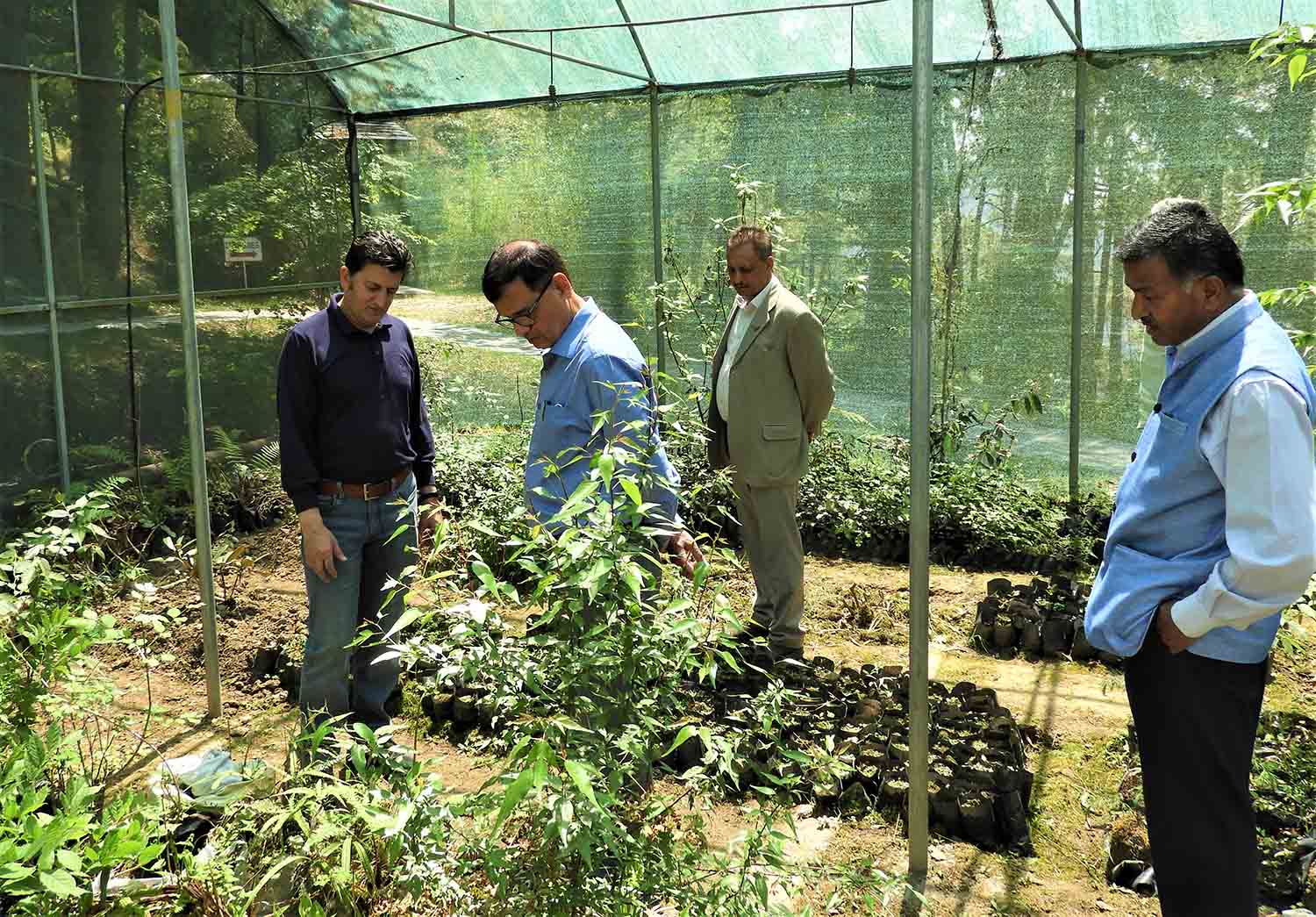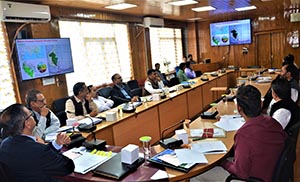SHIMLA: Forest experts and scientists today rooted for broadcasting the success story of the Western Himalayan Temperate Arboretum (WHTA) on a grand scale to create green spaces in Shimla city and other towns for conservation of "urban biodiversity with native species to give a new green shape" to a "local is vocal" mantra.
There is a need create germplasm bank for the lesser-known tree species (LKTS), urban forestry plantations and gardening among general public, they said.
WHTA in Summerhill has turned out to be a success story of conservation of rare and endangered native species of mountains that has evinced a great deal of interest among the ecologists.
WHTA should be uploaded on official web sites of HFRI, MoEFCC and ICFRE and popularizing it among public and tourists that create an awareness about native species and how to conserve them.
These suggestions came up at the Advisory Committee Meet held at PCCF Office, Forest Headquarters, Talland, Shimla. The meeting was presided by Rajiv Kumar (Pr. Chief Conservator of Forests (WL)-cum-Chief Wildlife Warden, Himachal Pradesh.
As this mountain ecosystem has become a hot spot, it warrants ex-situ conservation and germplasm establishment. WHAT should be made an important tourist attraction in the coming future.
They assert that the arboretum will play a great role in safeguarding the components of biodiversity, ensuring that this biodiversity remains available not only to support present-day and future use as well.
The native plant diversity success story would be available for restoration and management purposes too.
Delivering the presentation on WHTA, Dr. Vaneet Jishtu, its scientist incharge apprised the members about the concept and objectives of the arboretum, how it sails through its changing phases and works that shape up its present avatar.
He highlighted future plan of the project ranging from publicization of this venture for creation of green spaces in Shimla city.
Dr. Jishtu said the future priorities of the arboretum included tree planting and tree health for Shimla and other nearby towns for conservation of urban biodiversity.
“This can be ecological restoration with native species, aggressive public awareness, creation of germplasm bank for the lesser-known tree species (LKTS), urban forestry plantations and gardening”, he added.
Rajiv Kumar suggested that tourism activities need to be initially encouraged and henceforth regulated.
He was skeptical about the water availability at the arboretum, and suggested to increase the water conservation, its protection from forest fire in the future.
He also suggested to avail funding from the Jal Bandhan scheme of the state government and also suggested to develop linkages with the Tourism department.
Rajiv Kumar also said arboretum should have its own web page and be linked with the forest website as well as the HFRI website.
HFRI director Dr. Sandeep Sharma assured that the Institute would work upon it saying that it would be linked to the ICFRE and MoEF&CC website too.
Anil Thakur raised the issue of land ownership and all members agreed that it should be settled at the earliest. Dr. Lal Singh, director, Himalayan Research Group suggested that regular events should be organized at the arboretum for getting a true connection with nature.
Hem Thakur, director, Hail Himalaya, Shimla said the particular care should be given to trash management and visitors flow to arboretum must be regulated.
It was attended by its nominated members from Himachal Pradesh State Forest Department (HPSFD), Anil Kumar Thakur, APCCF (WL) and K. Thirumal, CCF (WL).
Other participants from the Wildlife Department included Sheetal Sharma, DFO (Hq.) WL, Sanjay Kapoor, Sushil Kumar from the Head Office (WL) and Santosh Kumar, (FG).
Dr. Dhiraj S Rawat, HoD, Department of Botany, H.P University, Shimla, Dr. Rakesh Kumar Singh, Scientist Incharge, G.B Pant Institute, Mohal, Kullu, Dr. Narinder Negi, Scientist, National Bureau of Plant Genetic Resources (NBPGR), Astha Chauhan, Brij Bhushan and Bhanu Verma from HFRI.
WHTA project is funded by the Wildlife Wing of the HPSFD and is currently being implemented by HFRI, Shimla.





